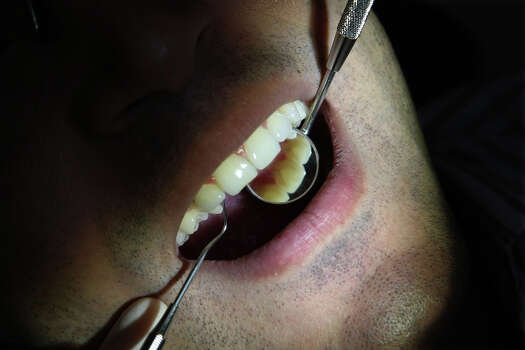Your mouth is more than just a pretty smile. It’s also a gateway to your overall health. Keeping that gateway clean may keep you healthier longer and looking younger.
“Just as white, straight teeth convey youth, a smile with crooked, discolored, worn, or missing teeth is associated with an aged look,” says Edmond Hewlett, DDS, professor of restorative dentistry at UCLA’s School of Dentistry. “
The adage ‘long in the tooth,’ used to describe older persons, reflects the fact that gum disease causes gums to recede and teeth to appear longer as a result.”
Keeping a youthful mouth comes down to two simple, proven, and practical steps:
- Brush and floss daily
- See your dentist every six months.
“Taking the time to brush and floss is what’s needed,” says Anthony M. Iacopino, DMD, PhD, dean of the dentistry faculty at Canada’s University of Manitoba, professor of restorative dentistry, and an American Dental Association spokesman. “Brushing, flossing, and going to the dentist is so easy to do, it’s not expensive, and everyone should be doing it.”
What’s Stopping You?
“Folks don’t take (oral health) seriously,” says Samuel Low, DDS, MS, president of the American Academy of Periodontology and professor emeritus of periodontology at the University of Florida.
“They take their looks seriously and the smile is a priority, but people don’t think about their gums. Brushing takes time, and flossing is one of the most difficult habits. Only 25% of people floss and I don’t think people see the benefits,” says Low, who estimates that it takes two to three minutes per day to floss properly, but “these days, people are crunched for time.” Low is a stockholder in Florida Probe Corporation, a dental technology company.
Looks aside, there’s another reason to make time for dental care. If you don’t, it could affect your health.
Inflammation, Periodontal Disease
Inflammation can happen when bacteria and debris, such as bits of food, enter the blood vessels around the teeth. Inflammation is your body’s response to such invaders. And if it happens over and over again, you could wind up with long-term (chronic) inflammation.
“The mouth is one of the major contributors to high levels of inflammation in the body,” says Iacopino, who has consulted for Colgate and Johnson & Johnson.
Chronic inflammation is linked to chronic diseases, including heart disease, diabetes, arthritis, and Alzheimer’s disease. It’s not clear if the inflammation causes those diseases or is a marker of some other cause. But either way, it’s not a good sign.
Then there’s periodontal disease, which affects 80% of Americans. It’s caused by extensive bacterial buildup along the gums and teeth. Periodontal disease is the top cause of tooth loss.
Bacterial buildup, inflammation, tooth decay, and periodontal disease happen quietly and slowly. That’s why so many people don’t know it’s happening.
When done consistently and correctly, brushing and flossing reduce bacteria or plaque buildup. That helps prevent inflammation and gum disease.
Stained Teeth
Smoking and drinking, particularly red wine and coffee, can stain your teeth and affect how old you look.
Tooth whitening (over-the-counter and in dentists’ offices) has become increasingly popular in the U.S. and is often marketed as a way to look and feel younger.
Experts say although artificial whitening can temporarily improve a smile, you still need consistent brushing, flossing, and routine dental care to have a lasting impact on how well you age.
Of course, you need to do more than brush, floss, and see your dentist to stay young. Your entire lifestyle matters. “If you want to slow down your aging clock, getting enough sleep, a healthy diet, exercise, and keeping down your levels of inflammation are all key,” Iacopino says.
Hewett agrees. “The fact remains that there are no shortcuts to getting and staying healthy, and oral health is no exception,” he says.
Source: Prisma Dental




